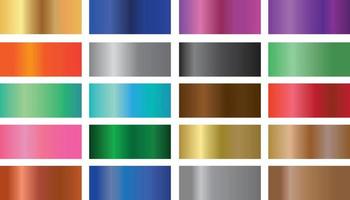

The (1) in the above illustrates the following code: background:Ĭonic-gradient(from -45deg,#ECEDDC 90deg,#0000 0),Ĭonic-gradient(from 135deg,#ECEDDC 90deg,#29AB87 0) Not the best pattern but it illustrates the technique we are going to use in this article to build better ones! If we define a background-size, we create a pattern: The yellow is filling the remaining space which is also 135deg ( 360deg - 225deg).

The blue starts from where the red ends and continues until 225deg so it’s filling 135deg. We still have the same center but no transition between the colors. This will avoid us writing the same value twice. We can still do better like below background: conic-gradient(at 75% 25%, red 90deg, blue 0 225deg, yellow 0)īy specifying 0 (a value smaller than the previous one) the browser will automatically make it equal to the previous one. Note the use of the same angle between two colors ( 90deg and 225deg). To do this, we need to make the color start where the previous one ends: background: conic-gradient(at 75% 25%, red 90deg, blue 90deg 225deg, yellow 225deg) In most cases, we don’t need a smooth transition but rather “hard stop” colors. We place the center point at X=75% and Y=25% then we create a color transition between red, blue, and yellow. Let us change the % value of the light green color and see what happens.Let’s take a basic example to see how it works: background: conic-gradient(at 75% 25%, red, blue, yellow) Syntax: background-image: linear-gradient(90deg, white, lightgreen, darkblue)īackground-image: linear-gradient(90deg, white 0%, In the above HTML first code, just change the “background-image” in the CSS part of the head section as given below. The two gradients given below are equivalent. If you don’t specify the location of a color, it is placed halfway between its preceding color and the color that follows it. Syntax: background-image: linear-gradient(135deg, white, lightgreen, darkblue) Įxample 4: This demonstrates the setting of the position for each color. In the above HTML first code, just change the “background-image” property value in the CSS part of the head section as given below. Syntax: background-image: linear-gradient(to right, lightblue, darkblue)Įxample 3: This demonstrates the setting of direction in degree. In the above HTML code, just change the “background-image” property value in the CSS part of the head section as given below.
#Background color css gradient how to#
How to fetch data from JSON file and display in HTML table using jQuery ?Įxample 2: This demonstrates the setting of direction.What is the difference between CSS and SCSS ?.Make a div horizontally scrollable using CSS.How to align content of a div to the bottom using CSS ?.How to get values from html input array using JavaScript ?.How to apply style to parent if it has child with CSS?.How to place text on image using HTML and CSS?.How to make a vertical line using HTML ?.How to auto-resize an image to fit a div container using CSS?.How to vertically center text with CSS ?.How to convert JSON string to array of JSON objects using JavaScript ?.How to make flexbox children 100% height of their parent using CSS?.Create a Responsive Navbar using ReactJS.How to set fixed width for in a table ?.How to set div width to fit content using CSS ?.Making a div vertically scrollable using CSS.How to select all child elements recursively using CSS?.How to Upload Image into Database and Display it using PHP ?.How to position a div at the bottom of its container using CSS?.How to create footer to stay at the bottom of a Web page?.CSS to put icon inside an input element in a form.
#Background color css gradient update#
How to update Node.js and NPM to next version ?.How to insert spaces/tabs in text using HTML/CSS?.Top 10 Projects For Beginners To Practice HTML and CSS Skills.ISRO CS Syllabus for Scientist/Engineer Exam.ISRO CS Original Papers and Official Keys.GATE CS Original Papers and Official Keys.


 0 kommentar(er)
0 kommentar(er)
